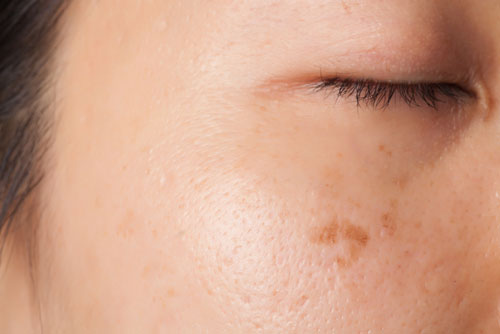
Overview
Bruising and swelling is an unfortunate occurrence with almost every surgical procedure. Usually the swelling lasts for only a few days to weeks. In a few procedures such as liposuction, the last bit of swelling can last for several months after the procedure. There are several measures that can be taken to minimize swelling.
- Surgical technique – Dr. Concannon does not use the electrocoagulator (bovie) to cut tissue. This decreases thermal damage to the tissue which can increase swelling. Gentle handling of tissues helps to limit bruising and swelling.
- Compression – Compression garments are extremely important after liposuction and are worn for 6-8 weeks.
- Ice – most valuable after facial procedures such as facelift and eyelid surgery. Use ice packs, facial compresses or frozen peas for approximately 10-20 minutes each hour. Most valuable for the first
24-48 hours. - Avoid anticoagulants including – aspirin, Vitamin E, garlic, ginger, ginseng, ginko biloba and St. John’s wort for 1-4 weeks after surgery. Most of the herbal medications that increase bleeding start with the letter “G”.
- Avoid excess salt intake and alcohol.
- Don’t over do it – follow your postoperative instructions for your specific procedure.

Of these, only the surgical technique and post-operative care are controllable. Some patients are convinced that a certain cream or ointment for scarring helped to fade their previous surgical scars. In reality, scars always fade to some degree over the first year after surgery, no matter what you do. Post-operative care of scars include prevention of bad scars and treatment of bad scars. If necessary, scars can often be improved.
EARLY TREATMENT TO HELP PREVENT BAD SCARS
- Limit motion/ tension on the scar – This is particularly valuable in the first 6 weeks. Common locations of tension include the knees, back and neck. In breast lift surgery with breast implants, the tension on the scar occasionally result in less favorable scars. Often after removal of sutures or dressings, Dr. Concannon will apply tape or steristrips to reduce tension on the scar.
- Avoid sun/ UV rays – This tends to pigment maturing scars. Protect with SPF 15 or higher for at least 1 year after surgery
- Antibiotic ointment (Neosporin ointment, Bacitracin, Triple antibiotic ointment –) Studies have shown that moist wound healing is quicker and results in better scars. Antibiotic ointment helps to hydrate the wound with the added benefit of decreasing bacteria in dirty wounds. Antibiotic ointment is beneficial when a wound in not completely healed (abrasion injury, cut, scrape, recently closed incision) but is no longer valuable after epithelialization has occurred. This is within 24-48 hours of a surgically repaired wound.
- Mederma – A topical gel that is rubbed into the scar. It is not-greasy and a dressing does not need to be applied over it. It has been reported to help soften scars. Some studies show that petroleum ointment (Aquaphor) is just as effective at improving scars. The active ingredient is onion extract (alium cepa) which in some Asian countries has been used for years for scar treatment. Mederma is easy to use and easy to find in stores. Rub it into your scar 3x/ day for 8 weeks. It also comes in a pleasant smelling children’s version and more recently with SPF 30 sun protection. A 1.76 oz tube should last for 8 weeks and costs $25 to $30
- Adhesive tape – Studies have shown an improvement when paper tape is applied to a scar. Scar hydration and possibly pressure may account for this effectiveness.
TREATMENT OF BAD SCARS AFTER THEY HAVE FORMED
- Silicone dressings– Silicone gel sheeting has been shown to improve scar appearance and symptoms. The mechanism is thought to be related to scar hydration, pressure and an ionic charge of the silicone. These are hard to find in stores (find them online) and relatively expensive. Generally, the sheets are self adhering and placed on the problematic scar for 12-23 hours a day. Each sheet can be reused several times. There are several options including sheets and ointments:
- Circa-Care – about $50 for a 6″x6″ square, can be cut and reused for about a month.
- Scar away – 12 sheets (3″ x 1.5″) for around $50 or (7″ x 1.5″) for about $60
- Epiderm by Biodermis – Several options for shapes and sizes (perfect for breast surgery and tummy tuck surgery) ranging from $14 to $97 per sheet
- Xeragel by Biodermis – 100% silicone gel ointment for areas where silicone gel sheeting would be difficult
- Scarguard – Topical “brush on” application. In addition to silicone – has cortisone, and Vitamin E. Available in most drugstores for $25 to $65.
- Kelo-Cote – comes in a silicone gel ointment or spray of various sizes from $17 to $100.
- Pressure – Pressure therapy has been used for years in burn and plastic surgery centers for the treatment of raised or hypertrophic scars. There is actually little true science demonstrating effectiveness, however, plastic surgeons have all seen raised scars that have been significantly improved. This is most feasible in areas where pressure is possible such as to protect keloid scars from reforming on the ear after scar removal and with Jobst pressure dressings on raised burn scars
- Steroid injection of scars– Steroid (such as Kenalog or Hydrocortisone) injected into the scar can decrease symptoms such as pain and itching. Steroid injections can also help to flatten raised scars. A drawback of steroid injection into scars is that it can cause the scar to widen.
- Laser treatment- Has been shown to improve scar appearance and reduce scar symptoms such as pain and itching
- Dermabrasion – mechanical removal of the top layers of scar, results in modest scar improvement
- Surgical scar revision – surgical scar revision is most effective when there is a specific reason that the scar healed poorly in the first place such as wound separation, infection or tension. Generally wait at least 6-12 months after surgery
Dr. Concannon scar treatment recommendations can be summarized as follows: Use sunscreen. If surgical tape is applied, keep it on as long as possible. If the scar is red or pink but otherwise flat, be patient. If the scar begins to become raised, see Dr. Concannon to initiate silicone gel sheeting therapy.
